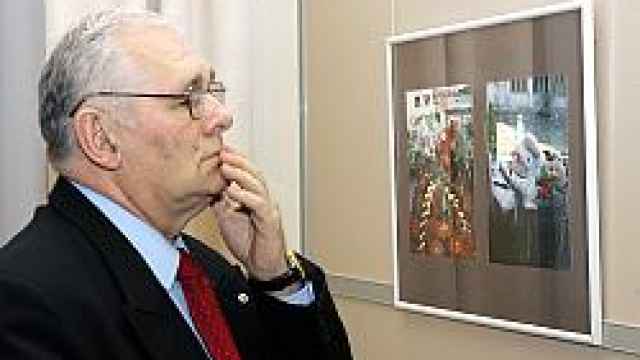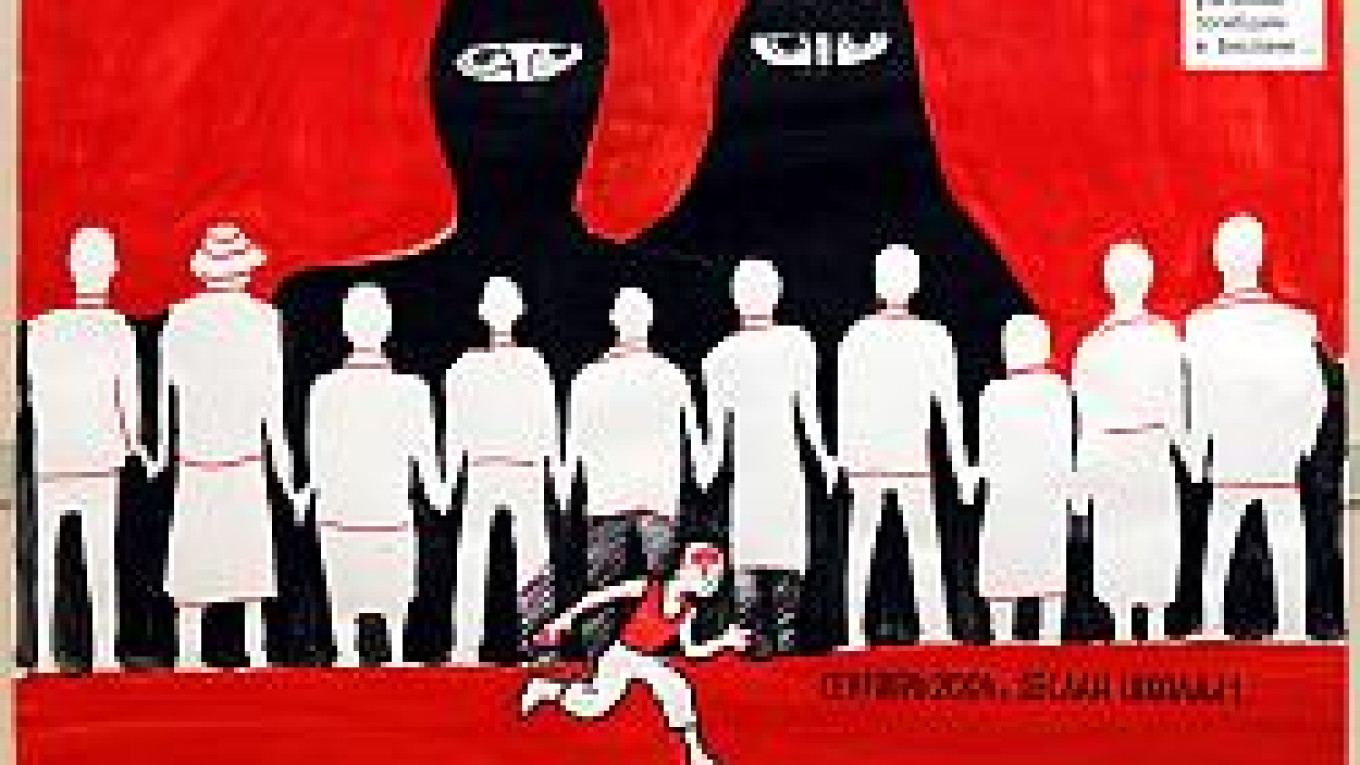These and other drawings by children from Beslan are part of the art therapy that child psychologists hope will help them to come to terms with the attack on the town last September that left more than 330 people killed, including more than 150 children.
Six months after the tragedy, an exhibition of children's drawings and paintings titled "Everyone Shares Grief" opened last week at Moscow's Nikolai Ostrovsky Humanitarian Center. The exhibition also features art by Moscow schoolchildren about Beslan and a collection of photographs taken by Mir Novostei's Alexander Strelnikov, who visited the town three weeks after the tragedy.
Organizers said they wanted to remind people of the vast work that still needs to be done to help the town's children recover.
Eleonora Shablovskaya, a professional artist and a member of the Lions Clubs International, a worldwide humanitarian organization that helped organize the exhibition, said that the drawings were not just works of art, but "documents of the time we all found ourselves in."
Emilia Chervinskaya, president of the nongovernmental Association of Experts on the Problems of Children, said at the opening ceremony that the drawings were a sign of hope and of the "heroism of those psychologists who from day one have been working with these children."
Fatima Bagayeva, who works as child psychologist at Beslan's polyclinic, said the exhibition was based on drawings made by traumatized children from the town, including some who had been held hostage, in the two months following the tragedy.
Since September, more than 400 children aged between 5 and 12 have taken part in art therapy sessions at the polyclinic.
One technique psychologists have used involves children drawing on the blank side of wallpaper, and then using buckets of water to wash away their memories and fears.
Some kids drew "furiously," Bagayeva said.
"One of the girls, who was held hostage in the school with her mom and her brother, drew for two hours and washed off what she had done three times," she said.
The emotional distress, she said, was shown either in the way they depicted people or in the colors they used. "It can be either red or black. Red is a color of pent-up aggression," she said.
 Vladimir Filonov / MT Pediatrician Leonid Roshal looking at photos of Beslan taken by Alexander Strelnikov. | |
In art therapy, children were free to draw what they wanted and how they wanted, Bagayeva said.
Leonid Roshal, a Moscow pediatrician who came to prominence for his role in mediating between the authorities and hostage-takers during the Dubrovka theater siege in 2002, and who also tried to mediate with the attackers in Beslan, came to look at the exhibition. He said he wanted to find "an element of recovery, sun or joy" in the children's paintings.
"Some of the pictures have it," he said.
Bagayeva said that the drawings the children are making now are noticeably different from the ones they were making soon after the tragedy.
"Children are simpler and more open than adults, and they are faring better than many of the parents," she said.
But Shablovskaya said that the tragedy was a "colossal trauma" that the children would carry with them throughout their lives.
"Beslan will never leave them," she said.
The "Everyone Shares Grief" exhibition runs Wednesdays to Sundays at the Nikolai Ostrovsky Humanitarian Center, 14 Tverskaya Ulitsa, until March 20. Tel. 923 0173.
A Message from The Moscow Times:
Dear readers,
We are facing unprecedented challenges. Russia's Prosecutor General's Office has designated The Moscow Times as an "undesirable" organization, criminalizing our work and putting our staff at risk of prosecution. This follows our earlier unjust labeling as a "foreign agent."
These actions are direct attempts to silence independent journalism in Russia. The authorities claim our work "discredits the decisions of the Russian leadership." We see things differently: we strive to provide accurate, unbiased reporting on Russia.
We, the journalists of The Moscow Times, refuse to be silenced. But to continue our work, we need your help.
Your support, no matter how small, makes a world of difference. If you can, please support us monthly starting from just $2. It's quick to set up, and every contribution makes a significant impact.
By supporting The Moscow Times, you're defending open, independent journalism in the face of repression. Thank you for standing with us.
Remind me later.


